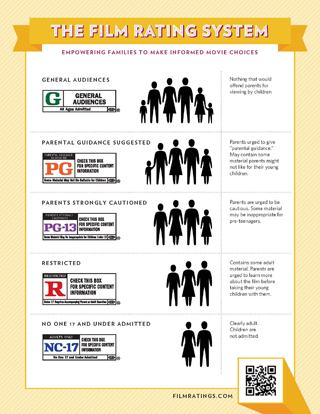The eagle-eyed “Movie Mom” spotted a subtle posted policy change in movie industry placement of trailers in relation to youth audiences. Movie Mom Nell Minow notes that promotional trailers now say they are approved for “appropriate audiences” whereas before the phrase was “all audiences”.

Clearly, the new language gives theaters (and websites streaming trailers) more leeway in placing these promotional two-minute clips. Movie Mom and a Los Angeles Times blog by Patrick Goldstein knock the stealthy revision (see links below). All the discussion seems cinema focused, but perhaps it’s placement of trailers on the web that promoted the change. It’s really hard to know the precise composition of a website audience.
“Marketing to Moviegoers: Second Edition” notes that the Advertising Administration, which is the self-regulatory board involved in audience classification ratings, has over the years allowed more violence and sex innuendo for PG and PG-13 films. The benchmarks for choosing film classifications is always evolving to keep up with our changing society.
In 1969, the social drama “Midnight Cowboy” – a serious major studio release that won the Oscar for Best Picture – was rated an extremely-restrictive X (or NC-17 in the current scale) while today the same film would easily be an R—and a mild one at that. In 1970, an edited version of “Midnight Cowboy” was rated R.
“The PG-13 category was added in 1984 when the public complained that the PG rating for ‘Indiana Jones and the Temple of Doom’ was inadequate because of one scene in which a beating heart is pulled out of a man,” notes “Marketing to Moviegoers: Second Edition”. “The rest of the film was PG oriented.”
The more recent issue is “ratings creep’ in the PG-13 classification, where cartoonish violence, coarse language and sex—but mostly holding the line on graphic realistic violence and drug use.
“Although parents report a relatively high satisfaction level with the Motion Picture of America Association (“MPAA”) system, some critics assert that, over time, ratings creep’ has resulted in more violence in films rated PG and PG-13,” says “Marketing to Moviegoers: Second Edition.”
“Some have argued that the level of violence in PG-13-rated movies, in particular, has increased over [recent] time, blurring the line between PG-13- and R-rated violent content,” writes “Marketing to Moviegoers”.”The [Federal Trade Commission] observation about ‘ratings creep’ refers to a moving standard. One could argue that this is actually a good thing, because it means film ratings evolve as society does.”
Related content:
Leave a Reply